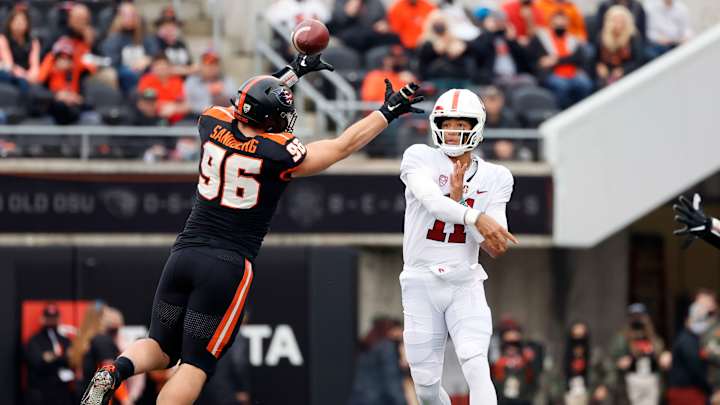In the transfer portal era of college football Stanford will pick a new starting quarterback the old fashion way

In this story:
You can no longer discuss college football and not mention the effect that NIL and the transfer portal has had on the sport.
There was once a time, believe it or not, where players who transferred were penalized and forced to sit out a year. There were of course special exceptions, but for the most part, player movement was not nearly as common. Now, the sport is built off of player movement.
When coaches are recruiting players out of high school, they are also recruiting for the likely chance that at least some of the players they are courting will be up for grabs in a couple years when they enter their name into the transfer portal. The position that is arguably the most important in the portal is of course the quarterback.
We have seen transfer quarterbacks like Caleb Williams win the Heisman, and to the extreme we have seen one in Joe Burrow win the Heisman and the championship. Landing the right transfer quarterback can be the difference between a team being a legitimate contender or falling behind within their conference. Long gone are the days where a program recruits a quarterback, he sits behind an upperclassman, and then takes over for his predecessor. There aren't many Tavita Pritchard to Andrew Luck transitions within college football anymore.
Now I'm not saying that I personally wish college football would go back to that, but it isn't a common means of selecting a signal caller anymore. See Georgia's Justin Fields for example, or Texas' Quinn Ewers. Both were highly touted recruits, who didn't want to wait their turn, and elected to hit the portal to find somewhere they could play immediately. It obviously worked out for Fields, and Ewers showed some signs of why he was ranked so highly. Transferring out when you don't get a chance right away has become the norm.
What does all of this mean for the programs? Well, and this applies to every position in college football, programs are more enticed by an experienced transfer portal player rather than hoping some high school kid works his way up the depth chart. That's not to say it can't happen, as Ohio State's CJ Stroud and Alabama's Bryce Young both worked their way up to being starters after sitting behind someone, but what many people don't realize is the sheer quantity of programs that have elected to go the transfer route.
Looking ahead to 2023, of the 65 Power 5 programs, at least 34 programs (52%) will have a starting quarterback who is a transfer. That number will likely grow as more players enter the portal every day and find new homes.
Where does Stanford fit into this equation? They don't. The Cardinal have a new head coach in Troy Taylor who is learning the ins and outs of the transfer portal at a program with some of the most strict academic requirements in the country. Stanford has taken in two transfers in the Taylor era with one of them flipping, but in looking at the quarterback spot on the depth chart, the Cardinal will be selecting the heir apparent to Tanner McKee the old fashioned way.
There isn't a two year player from another program with some experience looking for a fresh start, no, their quarterback room is as inexperienced as any within the Power 5.
Aside from rebuilding a roster decimated by the transfer portal, Taylor's first quarterback while at Stanford will have little to no experience. Folsom native Ari Patu is the most "seasoned" vet in the quarterback room with just 25 passing attempts. Freshman Ashton Daniels threw just six passes, and was more so used as a wildcat quarterback. The third quarterback entering the fray, is four-star Myles Jackson, who by the time next season rolls around should actually be playing his senior year of high school football, but the Long Beach native reclassified to contend for what will be a very interesting quarterback battle.
It is not often that programs ever have quarterback rooms this inexperienced anymore, and actually have to deal with it. Just looking around the Pac-12 one or even 10 of the 12 teams will have a transfer behind center. Now, while 2023 may not be a year of contending for anything serious for Stanford, it will be a year of much need experience for whoever wins the job.
Even as Taylor tries to bring the program into the current era of college football, some aspects of Stanford will always resemble what college football once was.

Managing Editor and Publisher of CardinalCountry.com, formerly a Pac-12 Network Production Assistant and a contributing writer for USA Today's Longhorns Wire. I am a proud graduate of Quinnipiac University's sports journalism master's program. Follow me on Twitter @Kevin__Borba
Follow @AllCardinal